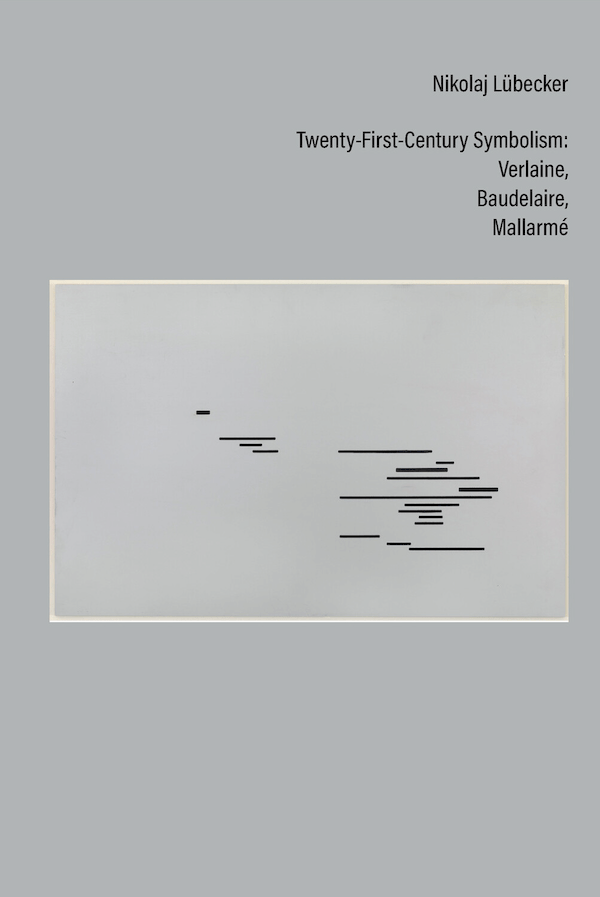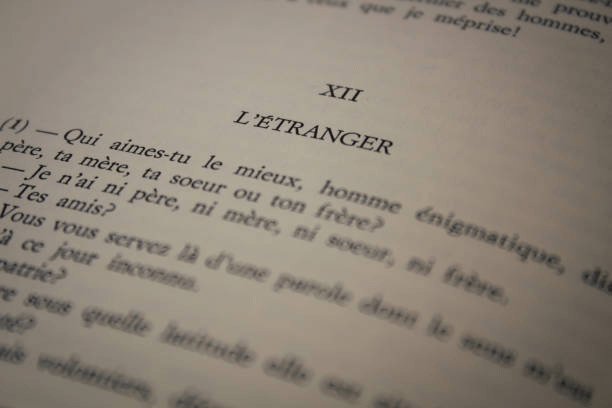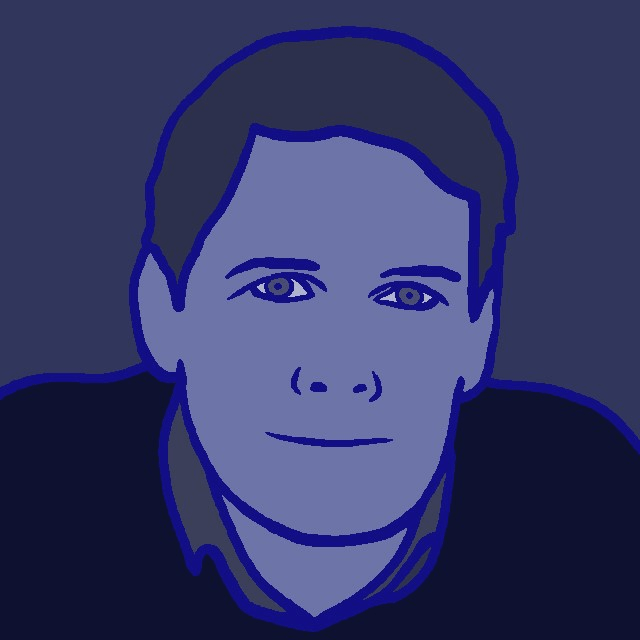New in for SS22, and one of the latest titles part of LUP’s Contemporary French and Francophone Cultures series Twenty-First-Century Symbolism by Nikolaj Lübecker argues that Verlaine, Baudelaire, and Mallarmé prefigure a view of human subjectivity that is appropriate for our times: we cannot be separated from the worlds in which we live and evolve; human beings both mediate and are mediations of the environments we traverse and that traverse us, whether these are natural, urban, linguistic, or technological environments. In an exclusive Q&A for Liverpool University Press, Lübecker chats to us about his latest book, reading nineteenth-century French poetry with a philosophical corpus, as well as his concerns for the visual.

1. First of all, congratulations on the publication of Twenty-First-Century Symbolism. Could you tell us a bit about how you came to write the book?
Thank you. In one sense this project began a very long time ago, when I was an Erasmus student in Paris, attending Julia Kristeva’s lectures on Mallarmé. At the time, I was interested in post-structuralist philosophy, and that led me to Mallarmé. I immersed myself in his work, and eventually wrote a PhD-dissertation about Mallarmé under Kristeva’s supervision. But nineteenth-century French poetry is not always easy to teach in university settings, so for many years, I taught and wrote about other exciting topics – not least in the field of film studies. Then I came to Oxford where we do teach Baudelaire, Verlaine, and Mallarmé, and when my great colleague Roger Pearson retired, I was asked to take the Mallarmé lectures. Reading my way into the poets and the critical literature that had been written about them while I had been studying other things, I began to think that maybe some of those ‘other things’ (media-theory, cybernetics, process philosophy) would allow me to offer new and contemporary readings of the poets. So that’s what this book is trying to do. I largely leave aside the frequently studied question of how the poets might be situated in relation to their historical context; instead, I ask how Baudelaire, Verlaine, and Mallarmé speak to our present.
2. How did the project develop from its initial formulation to the book it has become?
Twenty-First-Century Symbolism is not a long book, but it is longer than I thought it would be. I imagined a short, manifesto-like text, but due to the complexity of the poetry, and of some of the debates it stimulates, I ended up with a longer text. I hope a bit of the original ambition – a certain directness, even at the expense of nuance – remains.
3. What were some of the key discoveries you made during the process of researching and writing your monograph?

I discovered how wild and generous the imaginations of these poets are. The critical literature about their poetry is amazing, it contains some of the most important texts in twentieth-century literary criticism. Nevertheless, I still think that we tend to establish a too narrow framework for the study of these poets. We tend to prioritise their immediate social and cultural history, often a bit of biography sneaks into our studies; we generally concentrate on language and politics. This can all be exciting and valuable, and we should continue such explorations, but we should also be careful not to marginalise some the poets’ wilder speculations about the nature of the universe, how to make sense of everything that exists (now and in the future), and how poetry relates to the questions explored by natural scientists. In a time like ours, where we are beginning to understand how problematic it is to approach reality with our conventional, human-scale framings, it is stimulating to see how much these poets have to offer.
4. How do you think reading nineteenth-century French poetry with a philosophical corpus might enrich the study of French literature of that period more broadly?
Nineteenth-century French poetry has always been read by philosophers. Sometimes literary scholars will argue that philosophers don’t respect the literary works, that they ‘appropriate’ the poetry; of course, there are examples of this (and of course literary scholars do this too), but I think we should welcome disciplinary differences and be generous towards ‘appropriations’ – they generally originate in a love of the poetry.
The question of how philosophy can enrich the study of nineteenth-century French poetry obviously depends on what kind of philosophy we are talking about. In this volume, I partly draw on a corpus that hasn’t yet played a role in the study of nineteenth-century French poetry, giving, for instance, an important role to the philosophy of Gilbert Simondon. I think his writings on individuation and technology can help us understand the ways in which the poets explore interactions between environments and human beings. More generally, let’s open the windows. In different sections, I found it useful to introduce media-theory, haiku poetry, cybernetics, experimental films by Charles and Ray Eames, and by Straub and Huillet, among other things; hopefully some of these sections will stimulate the imagination of other readers.
5. Your book touches on various concerns for the aesthetic, with discussions on Verlaine and the image, Baudelaire and the power of colour, with another chapter devoted to art as ecological practice. In what ways does a concern for the aesthetic play a part in your book?

The aesthetic is a complicated notion, but it’s true that several sections of the book gravitate towards the visual. To some extent this is a reflection of my interests in film and art, to some extent it has to do with the close links between the poets and a large number of wonderful visual artists (Delacroix-Baudelaire-Manet-Mallarmé, for instance). However, my interest in images and colour is really part of a much broader interest in the dynamics between human beings and their worlds. In this respect, colour perception is particularly interesting; not least because ‘colour’, as Cézanne put it, ‘is the place where our brain and the universe meet’. An exciting thing about colours is that they are not simply ‘out there, in the world’ (they are not objective), nor are they simply a projection of the seer (they are not subjective). They challenge our tendency to think in objects and subjects, they prompt us to think differently about our being in the world. In the book, I therefore quote a sentence by the philosopher-scientists Varela, Thompson, and Rorsch in which they explain that the study of colour perception allow us to appreciate the general point that ‘world and perceiver specify each other’. I believe this is a pretty good starting point for understanding Baudelaire’s art criticism, his poetry, and the visual nature of Verlaine’s short poems.
6. What direction do you think scholarship on nineteenth-century French poetry might take going forward?
In terms of intellectual challenges, we are living in exciting times (as for the political challenges, I’d choose a very different adjective). Some of the challenges we face – the backdrop for my book is the ecological crisis and current technological developments – are forcing us to think differently about what it means to be human, what our place in the universe might be. Many scholars inside (and outside) the humanities are trying to respond to these challenges. Scholarship on nineteenth-century French poetry is not driving this agenda, but the study of Baudelaire, Verlaine, and Mallarmé can still feed into this wider project of rethinking human subjectivity and its relation to the world. If you want to experience how we are shaped by (and how we shape) the environments we pass through (and that pass through us), spend some time with Verlaine’s ‘Ariettes Oubliées’.
7. Would you be able to tell us a bit about what you are working on now?
I have two new projects. With my colleague Daniele Rugo at Brunel University, I am planning a book called Images of Unrest about political violence in documentary film. It may sound very different from Twenty-First-Century Symbolism (and it is), but Images of Unrest draws on some of the thinkers already discussed in Twenty-First-Century Symbolism, and it continues the exploration of how images shape subjectivities.

Other than that, I am also thinking about grand narratives. In the 1980s, the critique of grand narratives was associated with arguments about how we could no longer have faith in things like conventional political ideologies or the Enlightenment narrative about historical progress. This critique may have been justified and productive, but in retrospect it seems to me that one problem with ‘grand narratives’ was that in fact they were too small – too anthropocentric, too simplistic in their view of the natural sciences, and offering too little when it comes to thinking about human beings in relation to other species. I am interested in artists, artworks and scientific texts that are ‘properly grand’ (although I will not use this vocabulary). Mallarmé’s ‘Livre’ is an example of this; science fiction film and literature are full of such narratives; cybernetics and Gaia theory might come in too. At the moment, I think of this as my ‘World Brain’-project, a title I am borrowing from H.G. Wells, but I am pretty sure the project will end up taking a very different form from the one I currently imagine.
You can purchase a copy of Twenty-First-Century Symbolism by Nikolaj Lübecker via the Liverpool University Press website from 1st May 2022.
Follow us for more updates
Sign up to our mailing list
Twitter | Instagram
www.liverpooluniversitypress.co.uk

